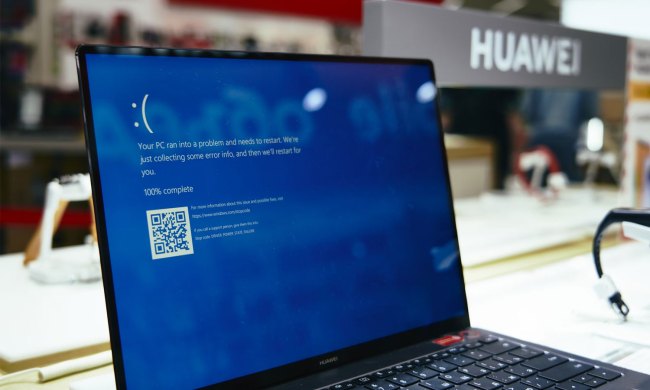
Want a domain name that stands out? Good luck. For years, the Internet has been limited to just 22 generic top-level domains like the familiar .com, .net, and .org. Sure, there are other top-level domains, but most are for countries (like .jp for Japan or .ca for Canada). Those general-purpose domains have been very limited.
No more. This year ICANN, the organization more-or-less responsible for Internet governance, is going live with an effort to massively expand the number of generic top-level Internet domains (gTLDs). The plan, years in the making, may eventually add over 1,000 new naming options. The first seven – .bike, .clothing, .guru, .holdings, .plumbing, .singles, and .ventures – are already live, and more will be coming online steadily well into 2015.
How did we get here? Will the new top-level domains make the Internet easier to use, or will they just make the online world more confusing?
What’s in a (generic) name?
For better or for worse, today’s Internet crept out of the Defense Advanced Research Projects Agency (DARPA) and the Department of Defense, with management eventually transitioning to the National Science Foundation and then ICANN. Originally there were only five top-level domains for the entire Internet, and they were very U.S.-centric: .com, .edu, .gov, .mil, and .org – .net. The little-used .int came a bit later.
In the old days, generic domains were locked down. Just as anyone who wants an .edu domain has to prove they’re an educational institution, back then only non-profits could get .org domains and .com basically meant “government contractor.” Country-code domains appeared in the mid-1980s, but the number of generic top-level domains didn’t change even as Internet use skyrocketed in the 1990s and 2000s.
The number of generic top-level domains didn’t change even as Internet use skyrocketed in the 1990s and 2000s.
.com, .org, and .net to essentially anyone. Second, early Web browsers like Netscape started using .com as a default: Typing “microsoft” into an address bar was equivalent to “microsoft.com.” Suddenly .com became the most valuable of the Internet’s top-level domains.
It still is – that’s why sex.com can sell for millions of dollars. Early proposals for generic domains like .store and .arts) were shot down by the U.S. government, so new generic names didn’t start joining the original set until 2001. (Of those, you might have seen .biz, .info, and .name.) Later, ICANN gradually approved “sponsored” additions – like .jobs, .travel, and (after much controversy) .xxx, but in almost three decades only 14 new generic top-level domains had been created. The process of truly opening up the generic domain space was embroiled in a years-long, often politicized process at ICANN, and meanwhile .com continued to be the most crowded – and most-valued – top level domain.
“We’ve seen many [dot] com domain negotiations in the five and six figures,” said Canadian intellectual property attorney Dianne Aines in an interview. “Protecting trademarks and IP is important, of course, but packing the world’s businesses into a single top domain has created some preposterous situations.”
What are the new TLDs?
Adding hundreds of new generic top-level domains is intended to alleviate pressure on .com and other unrestricted domains (like .net). It could also reduce the misleading use of country codes. After all, does the bit.ly URL-shortening service have anything to do with Libya? Nope – the name is just a clever “domain hack.”
What new domains are coming? Unfortunately, that’s complicated.
ICANN maintains a list of “delegated strings”: approved new generic top-level domain names. Right now there are 122 of them, but more than 1,900 have been submitted. Some applications have been withdrawn, but most are still in the works. Some companies applied for the same top-level domain; those conflicts will be resolved by private negotiation or auction.
Approval of a new name does not mean anyone can go out and register a new domain in it – at least, not yet. Once a name is approved, introductions will generally have three phases:
- Sunrise, an ICANN-mandated 60-day period wherein legal trademark owners worldwide can stake a claim before registration opens;
- Pre-registation or Landrush period, determined by the owner, where applicants can pre-register names, most likely for a hefty fee;
- Open registration, where anyone can register a new domain.
Right now only a handful of new TLDs are in open registration: the first seven that went live January 29, and seven more going live February 5 (.camera, .equipment, .estate, .gallery, .graphics, .lighting, and .photography). Expect a handful of new top-level domains to enter free registration every week for most of 2014.
Who comes up with these names?
In theory anyone could propose a new generic top-level domain to ICANN – so long as each proposal comes with a solid business plan and a $185,000 check. If ICANN approves the application (the vetting is complicated), the operator has to line up ICANN-approved registrars (the usual suspects like Network Solutions, GoDaddy, Tucows, eNom, 1and1, etc.) to handle sales. Once all the infrastructure and ducks are in a row, the new gTLD can go live.
“Packing the world’s businesses into a single top domain has created some preposterous situations.”
.com and other domains to grab good names or defend their existing online brands. Donuts’ applications also include internationalized (non-English) domains, and the company expects over 200 of its top-level domain proposals will ultimately be approved.
“We’ve been studying the opportunity for nearly nine years now,” said Donuts VP Mason Cole via email. “We wanted to be the leading company in the space and make an assertive move to really diversify the namespace. And we did.”
So far, all the new gTLDs coming online belong to Donuts. Other major players include London’s Top Level Domain Holdings (TLDH) with 92 applications, Amazon with 76, Famous Four with 57, and UniRegistry with 54.
Breaking the .com stranglehold?
Creating new generic top-level domains unquestionably makes it easier to get a memorable domain name, since the pool of possible addresses is larger and many domain-seekers won’t have to compete with the whole world. After all, if you’re not a plumber, you probably don’t have to worry about .plumbing.

But the new domains come at a cost. Some small businesses and non-profits have described the sheer number of new gTLDS as little more than a shakedown by ICANN and domain registrars. Protecting names, brands, and online identities may mean registering and managing dozens of new domains – and the costs can be significant. Domains in the new gTLDs are routinely starting at $40 each. The Trademark Clearinghouse offers limited protection for registered trademarks at a base rate of $150 per trademark per year, but many businesses and individuals are still left out in the cold.
One important factor will be how search engines like Google, Bing, and Yahoo treat the new domains. If search engines treat sites in the new domains as realms of domain squatters, scammers, and even cybercriminals, those gTLDs probably won’t take off. However, if the new top-level domains are on equal footing with .com, sites will be easily searchable and could see wide adoption. It’s happened before: Google treats .io (for the British Indian Ocean Territory) on par with .com because of its geek-friendly acronym (input/output).
Is this any easier?
The long-term impacts of hundreds of new top-level domains remain to be seen.
New top-level domains may confuse non-technical Internet users, the elderly, or non-English speakers. In a time when we’re constantly being warned not to click suspicious links, how long until sites in new top-level domains seem legitimate?
“Not all the new top-level domains will succeed, but, as with .ly or .tv, it may only take one or two well-received services to legitimize a new top-level domain,” noted IP attorney Dianne Aines. “Of course, the reverse may also be true.”
Donuts also acknowledges it will take some time to build awareness and acceptance. “We will have more than a year of continual inflow of gTLDs,” Mason Cole says. “By then, we believe businesses, individuals, organizations, families will have become literate with the new naming options, and you’ll have seen them in advertising.”

New top-level domains will also make recognizing and even entering URLs more difficult for everyday users, particularly on mobile devices. Sure, holding the .com button iOS’s URL keyboard offers a few additional top-level domains, but supporting hundreds (or over a thousand) is impractical. However, everyday Internet users arguably don’t use bare URLs anyway: They often navigate to sites via search engines, links, or bookmarks.
In the meantime, new top-level domains don’t mean the Internet will fall apart. The introduction of .biz, .info, and even .xxx didn’t cause disruption; most users adapted with little trouble. On the other hand, these new domains may never carry the cachet of the 30-year-old .com, .org, or .net. For experienced Internet users, any site in the new top-level domains may seem like fly-by-night operation – at least for a while.
Time will tell.


